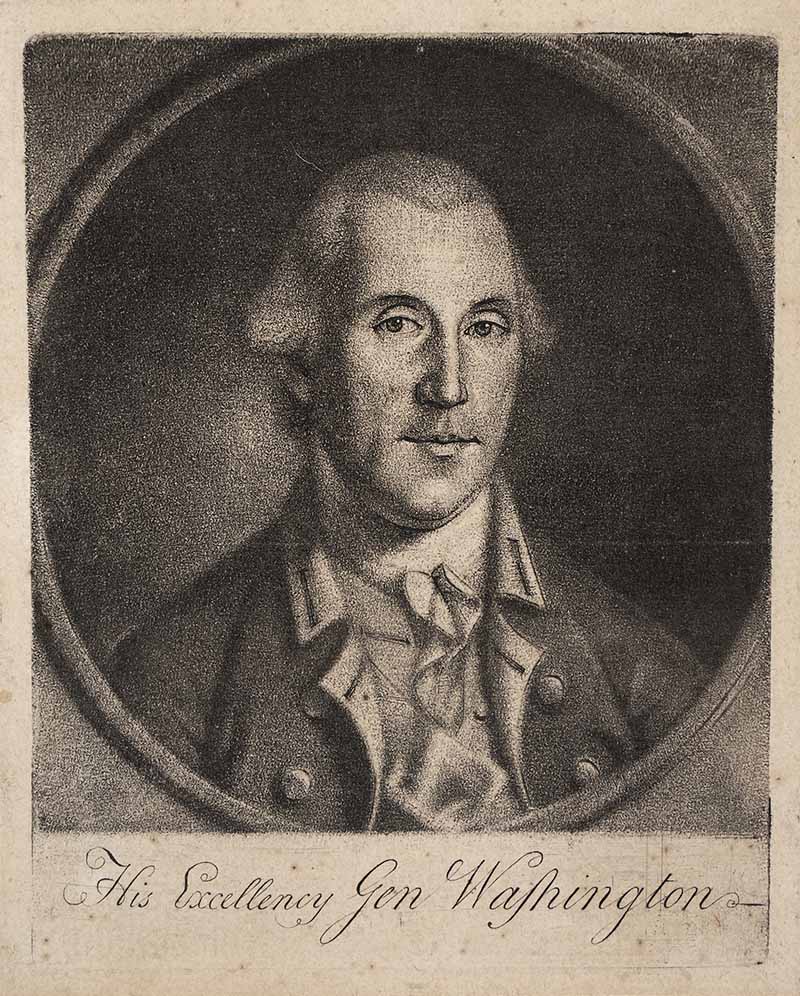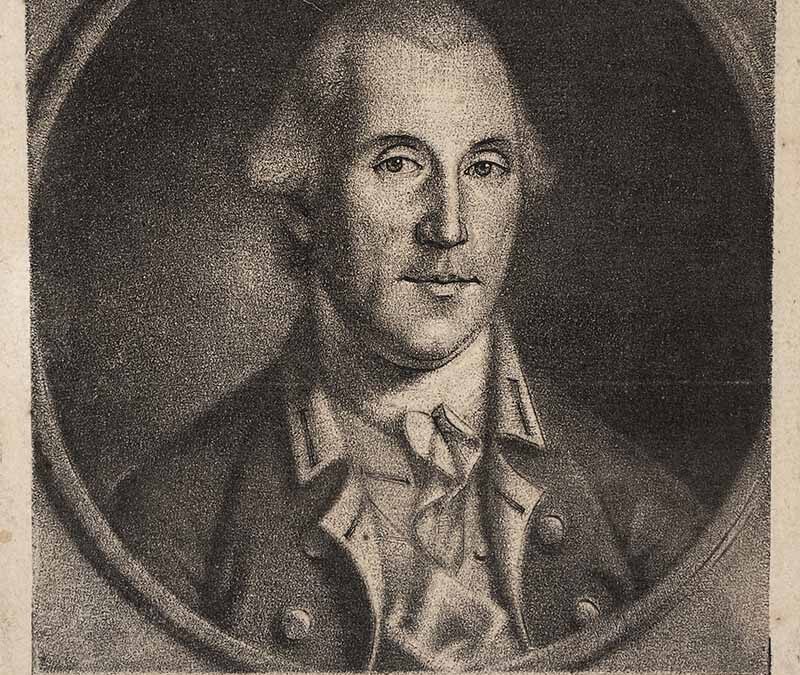His Excellency Gen Washington

| Maker | Charles Willson Peale |
| Date of Creation | 1778 |
| Location | Philadelphia, Pennsylvania |
| Materials | Ink on laid paper |
| Institution | The Society of the Cincinnati |
| Credit Line | The Robert Charles Lawrence Fergusson Collection |
| Accession Number | P&E L2014F47 MP |
| Photo Credit | Gregory R. Staley |
Charles Willson Peale’s mezzotint print of George Washington created in 1778 is one of the rarest and most iconic images of the commander-in-chief of the American forces during the Revolutionary War. It is the first accurate printed likeness of Washington, and the earliest one made by an artist who had painted him from life. Peale’s composition was widely copied by other engravers and became the most recognizable image of Washington during the era of the Revolution. But despite the print’s seminal place in the history of Washington portraiture, the Society’s copy is only one of three extant examples. Charles Willson Peale, the preeminent portraitist of the Revolutionary generation, began his mezzotint portrait of Washington in mid-October 1778. A form of intaglio printing, a mezzotint (from the Italian mezza tinta or “half-tone”) is characterized by subtle gradations of tone from deep black to white. The 1778 print of George Washington was only Peale’s second experiment with the mezzotint process, but it shows a remarkable mastery of the technically demanding medium. Peale produced about 150 copies of his Washington mezzotint, which he presented to prominent officials in Philadelphia and left on consignment at local shops (priced at five dollars each). From the moment it was in circulation, the 1778 mezzotint became the principal source of Washington’s image for other artists, including John Norman and Paul Revere. Based on Washington’s sittings for Peale in 1776 and 1777, it shows Washington in his mid-forties before the greatest stresses and privations of the war had taken their toll on his appearance.

